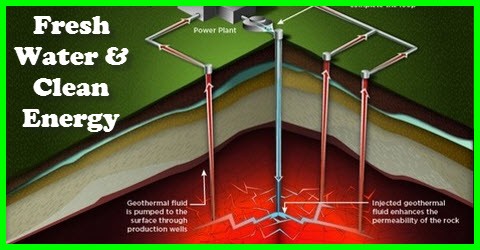Two technologies and companies are coming together to provide clean energy and fresh water
STW Resources Holding Corp announced today that its wholly owned subsidiary, STW Water, has executed a Teaming Agreement with Thermal Energy Partners LLC (TEP)
The perfect combonation TEP is a company who has the technology to produce geothermal energy and STW uses a fraction of that energy to produce fresh water from any number of dirty water sources.
Communities who end up deploying this type of technology will have a huge advantage in any kind of disaster situation when the main power grid goes down.
TEP has an innovative 24/7/365 onsite geothermal model that can keep facilities running even when the U.S. power grid or primary natural gas power plants may not stay online. TEP’s geothermal facilities are hardened to withstand severe weather events, are configured with micro-grid technology for maximum resiliency against cyber attacks, and configured with security safeguards to limit disruption. This particular geothermal power method is cost effective and a great compliment to other existing power sources that industrial and municipal facilities may be using currently.
Among the noted advantages STW, through its Salttech Water Processing DyVaR technology, will leverage TEP’s technology to streamline technical processes and system workflow and lower electricity costs of operating the STW DyVaR systems, thus resulting in lower cost fresh water. TEP will utilize STW’s technology to enhance the system’s strengths and minimize cost.
Together TEP/STW have the following competitive advantages:
-
Producing Onsite Fresh Water for Industrial, Agricultural and Municipal applications
-
Producing Onsite Renewable Power for Industrial, Agricultural and Municipal applications
-
Producing potential Mineral by-products onsite that can be sold to Industrial users
-
Multiple Sources of Water are compatible with the TEP/STW System: The integrated system can process water from multiple sources including industrial wastewater, high-TDS brackish and high TDS saltwater reverse osmosis concentrate reject, seawater or geothermal water
Read more at the original article

